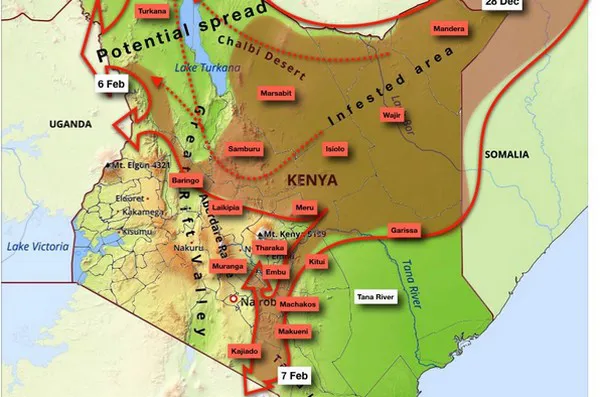Various traders have reported a strong demand market for haricot verts. Extreme rainfall has been causing quality problems in the Kenyan growing areas for a long time, which means that much less haricot verts are exported than usual.
Kenya is an important production country but the persistent rains cause disease pressure and lower volumes. As far as we know, the invasion of locusts that caused so much damage to crops in the horn of Africa, has not yet caused problems in the cultivation of haricot verts.

Spreading of locusts in Kenya, source FAO
Albert Heijn cooperates with growers in Africa for the supply of haricot verts. “The locust plague is in northern Kenya and our crops are in southern Kenya. Our growers are therefore not affected. For the time being it does not look like the locusts are coming to the south," says spokeswoman Pauline van den Brandhof of Albert Heijn.
Although the rainy season in Kenya is over, it will be several weeks before the new plantation comes into production and the supply from Kenya recovers, the traders expect.
